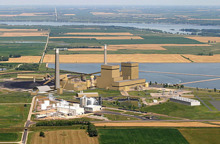The EPA has issued an objection relating to plans to build Big Stone II, a $1.6 billion coal-fired power plant near Millbank, South Dakota. The EPA’s Denver regional office stated its objections, which include inadequate emission limitations and standards and provisions for compliance, in a January 22 letter to the South Dakota Department of Environment and Natural Resources. The state agency has 90 days to resubmit its air quality permit for the facility Climate Biz reports.
The EPA’s objection is a clear sign that the federal agency will be taking a tougher, more proactive approach when it comes to greenhouse gas emissions and environmental standards for power plants, one that’s in line with the new policy stance and higher priority the Obama administration is placing on these issues.
Clearing the Air
While the Sierra Club and Clean Water Action applauded the EPA’s objection, project developers are confident that plant construction will move forward once they have addressed the objections and resubmitted their application.
Five utilities are partners in the Big Stone II project, which calls for a second power plant capable of generating 500-580 MW of electricity to be built on the site. Initial plans state that it would include “the best available emission-control technologies at the time of purchase.”
The new plant would be the largest public-private sector investment ever in South Dakota. It’s projected that the plant would take four to five years to build with construction starting in mid-2010. The electricity generated would supply homes and businesses in Iowa, Minnesota, Montana, North Dakota and South Dakota.
The project developers argue that Big Stone II’s CO2 emissions would be 20% lower than that of other power plants in the region.
They go on to claim that including the state-of-the-art emissions control technologies would actually result in no increase or a reduction of sulfur dioxide, nitrogen oxides and mercury emissions from the two plants as compared to the historical emissions from the existing plant. Particulate emissions—fly ash and gypsum—would be collected with wet scrubber technology, turning waste products into by-products that can be marketed and sold.



